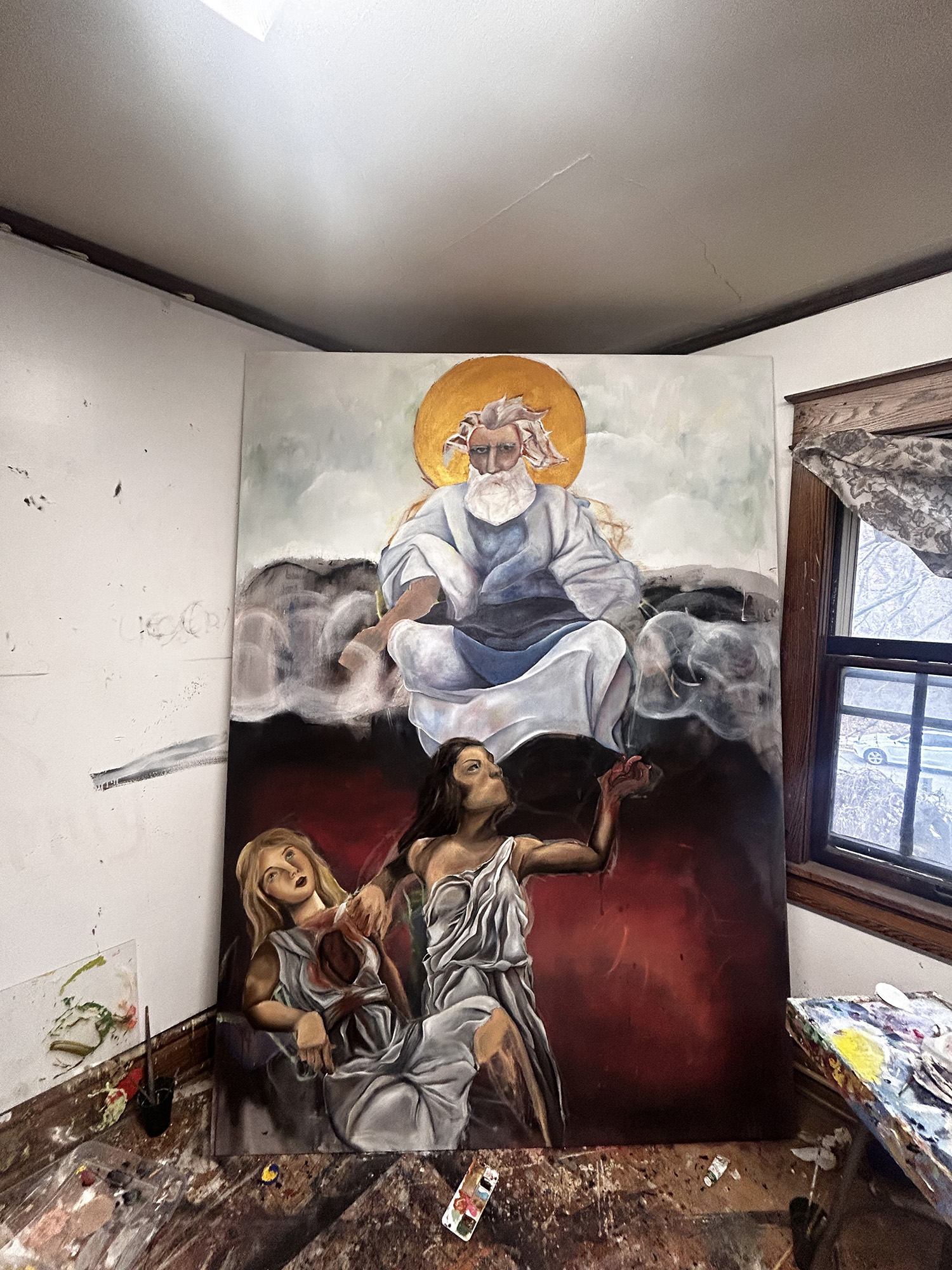Hannah Johnson: The Imagined Currency

The Imagined Currency
Hannah Johnson
Oil painting, 8 x 6 feet
Hannah Johnson is a senior from Elmhurst, Ill., majoring in psychology and art.
Artist statement
My name is Hannah Johnson and this is my senior project. I used acrylic and oil paint to create my painting, and more so than simply a myriad of mixed media, it is also an amalgamation of concepts. My background in both art and psychology often offers me opportunities to unite their common ground - to use my art as therapy for me and to express psychological constructs in an expressive, abstract form. My art has always aired on the side of realism, however, my mind has always been geared more towards imagination.
The process of beginning this painting was intimidating. I had never painted on such a large scale, nor constructed my own canvas prior to this experience. Standing at almost eight feet tall and 6 feet wide, it barely fit in the studio. Hours of standing and kneeling on stools, repetitions of climbing up and back down to get more paint, and dangerous leaning to get the right angle were spent. Oil paint allowed me to blend more seamlessly and manipulate the piece as I went, while acrylic paint provided me with underpainting and individual details to make certain aspects pop. I most closely associate with Renaissance and Classical art, wanting to leave human forms unconvoluted while still playing with dark and light, both in composition and in terms of content. I find inspiration in fantasy; childlike renditions of fairy tales juxtaposed with their violent original tellings; and religion; mythological artwork and Christian portrayals of divinity and humanity. I use these inspirations in my art, hoping to evoke a plethora of emotions based on the human experience.

Perhaps the most universal and innately human experience of all is loss. Even more than loss, grief. Psychology has taught me that there are five stages of grief - life has taught me that it is lifelong. This piece details my exploration of how religion interacts with loss. Portraying religious figures as well as depictions of human grief allows me to achieve such an interaction. At the bottom of this painting there is an engagement between two sisters: Depression and Bargaining, who are also cardinal stages of grief. Meant to embody the likeness of Rembrandt’s “The Sacrifice of Abraham” and imagery of a sacrificial lamb, Bargaining is the sister who, both of her will and against it, offers her sister’s heart to God for an appeasement of grief, or a life for a life. Depression is the mutilated sister draped over the rock, meant to demonstrate that grief is not simply a heart break, but a tearing out of one’s most vital organ. It is a gruesome interaction, but one that shows what we will do for those we love and what we do to them. It is a depiction of the imagined currency that exists between heaven and earth. As a sister outstretches her hand, offering the life of her sister to God in exchange, the interaction stops. God does make a motion to take the heart or to replace what was taken. He has not demanded sacrifice yet we willingly bargain with it anyway. This painting goes back and forth between feelings of hope and despair and it is human nature to find both within it.
